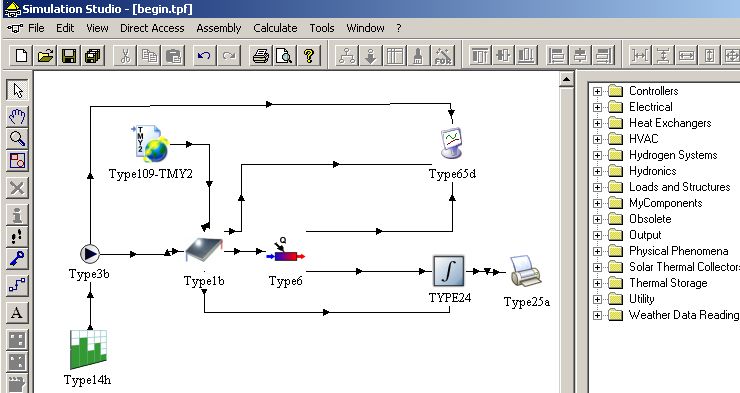

The description of each output in the proformas now makes the units clear. revised mass balance check to be function of convergence criteria added output (9) for mass balance error flag changed SSR power integral units from kJ & kJ/hr to kWh and kW.īugfix: corrected an error in the Type126 proforma that prevented the user from changing the value of certain parameters.īugfix: corrected an error in the number of data items included in the Type190.dat example inverter data file.īugfix: the pv_ref_params.exe tool for generating parameters for the 5-parameter PV model (Type190) had expired and has been renewed.Įnhancement: Type190 outputs power in both W and kJ/h. revised mass balance check to be function of convergence criteria added output (9) for mass balance error flag changed SSR power integral units from kJ & kJ/hr to kWh and kW.Įnhancement: Type 147. revised mass balance check to be function of convergence criteria added output (6) for mass balance error flag.Įnhancement: Type 146. Mid-timestep inversion mixing was removed as well.Įnhancement: Type 114. In prior versions of this model, auxiliary could change midway through a timestep. Mid-timestep inversion mixing was removed as well.īugfix: Type154 underwent a major rewrite starting over from generic tank model, implementing auxiliary controls with one decision per timestep (ON or OFF). corrected equation for calculating heat transfer to the ambient added output (6) for mass balance error flag corrected error message text on FoundBadInput errors.īugfix: Type153 underwent a major rewrite starting over from generic tank model, implementing auxiliary controls with one decision per timestep (ON or OFF). Block of Type numbers newly reserved for French community TRNSYS components.Įnhancement: Revisions to A4_trnViewBUI.pdfĮnhancement: Revisions to the trnViewBUI installer.īugfix: Type69.f90 – deleted unused variables in source code.īugfix: TrnsysFunctions.f90 – deleted blank lines in the ShowMessage() function.īugfix: 301 (complex fenestration model) – wrong area was used (module area of window type instead of surface area).īugfix: Type38 – the auxiliary heat would never turn on.īugfix: Type 110.
#Trnsys code
Documentation corresponds to code modifications made in v.Įnhancement: Revisions to the 07-ProgrammersGuide manual. Removal of Mathis.Įnhancement: Revisions to the Type153 and 154 sections of the 04-MathematicalReference manual.

#Trnsys software
Models are constructed in such a way that users can modify existing components or write their own, extending the capabilities of the environment.Īfter 35 years of commercial availability, TRNSYS continues to be a flexible, component-based software package that accommodates the ever-changing needs of researchers and practitioners in the energy simulation community.Įnhancement: Revisions to the 02-SimulationStudio manual. The standard library includes approximately 150 models ranging from pumps to multi-zone buildings, wind turbines to electrolyzers, weather data processors to economics routines, and basic HVAC equipment to cutting edge emerging technologies. The second part of TRNSYS is an extensive library of components, each of which models the performance of one part of the system. The kernel also provides utilities that, among other things, determine thermophysical properties, invert matrices, perform linear regressions and interpolate external data files. The first is an engine (called the kernel) that reads and processes the input file, iteratively solves the system, determines convergence and plots system variables.


 0 kommentar(er)
0 kommentar(er)
